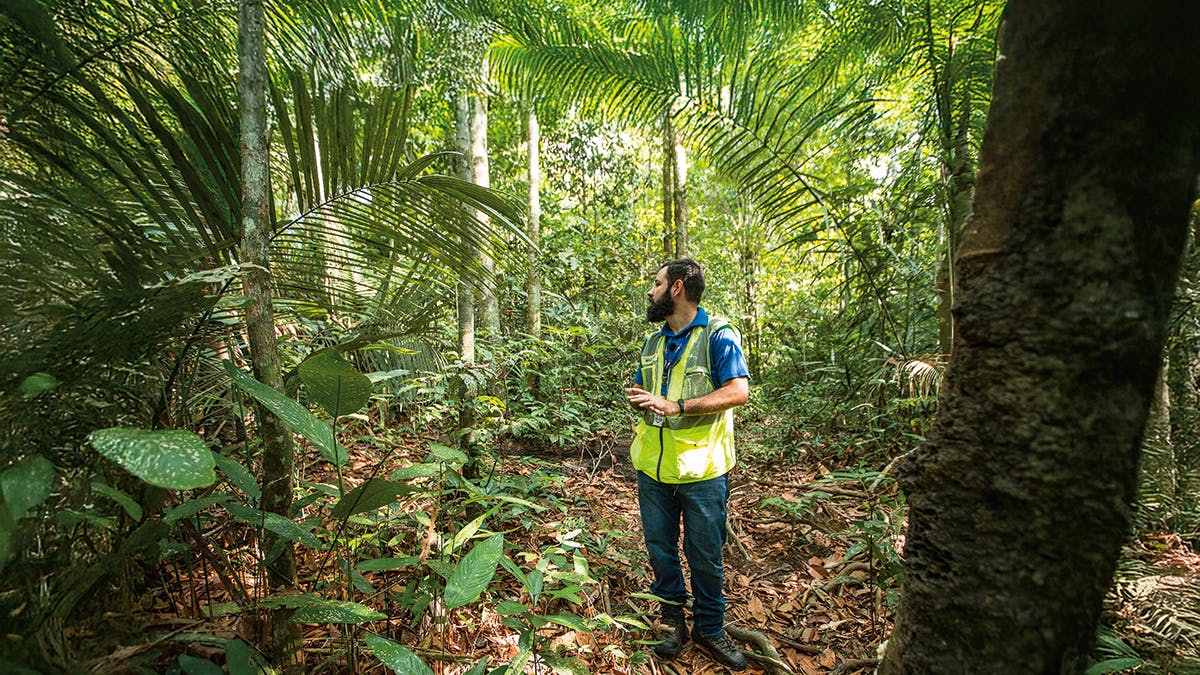

BRAZIL
A HIGHWAY THAT LEADS THE WAY
VINCI Highways has rolled out an ambitious environmental plan in order to protect wildlife around the southern section of the Entrevias concession in Brazil, where the duplication of a bridge over the Tietê River is being carried out. For the full duration of the project, any wildlife affected will be sheltered at a temporary base before being released back into its natural habitat. The plan also covers continuous monitoring of water quality in the Tietê River and the health of its aquatic wildlife, as well as workshops to teach local communities about the environment. The highway also stands out for its wildlife crossings; it is positioned alongside a tropical humid forest biome that is home to particularly rich biodiversity, where animals such as ocelots, pumas and otters are classified as endangered on the state of São Paulo’s list of endangered wildlife species. To protect them, almost 50 wildlife crossings have been brought into service, and 30 others are under construction.

PORTUGAL
SEQUESTRATION THROUGH “BLUE CARBON”
In Faro, Portugal, the LIFE RestoreSeaGrass project for the conservation and restoration of seagrass meadows has been launched in collaboration with the Algarve Centre of Marine Sciences, part of the University of Algarve, as well as other international organisations. The project has support from the EU LIFE programme and aims to restore marine plants that have deteriorated off the coast of Faro. It involves rehabilitating plant habitats, managing invasive algae species and monitoring biodiversity using drones and sensors. This groundbreaking project will also generate marine carbon credits to capture residual emissions, including those of VINCI Airports subsidiary ANA Aeroportos de Portugal, by 2030. It is set to create a significant positive environmental impact, capturing 95,000 tonnes of CO2 equivalent and preserving 191 hectares of marine plants by 2030.


FRANCE
PLANT AND WILDLIFE PROTECTION IN NANTES
VINCI Autoroutes has worked to restore the environment on the Porte de Gesvres site in Nantes, rolling out almost 30 measures to protect the surroundings for both people and wildlife. 15 hectares of forest were restored and 1.5 hectares protected using reinforced soil slopes. Moreover, 3,000 m2 of wetland has been restored, while 7,000 m3 of water has been preserved thanks to the expansion and creation of a new retention basin within a loop of the interchange. A total of three basins have been created and restored, while 160,000 trees have been planted and 365 metres of noise barriers installed. What’s more, over 30 species of birds are covered by the measures introduced to protect avifauna; a partnership with the French Bird Protection League (Ligue pour la protection des oiseaux or LPO), who advise on protective measures, has been established to ensure monitoring for 30 years.
